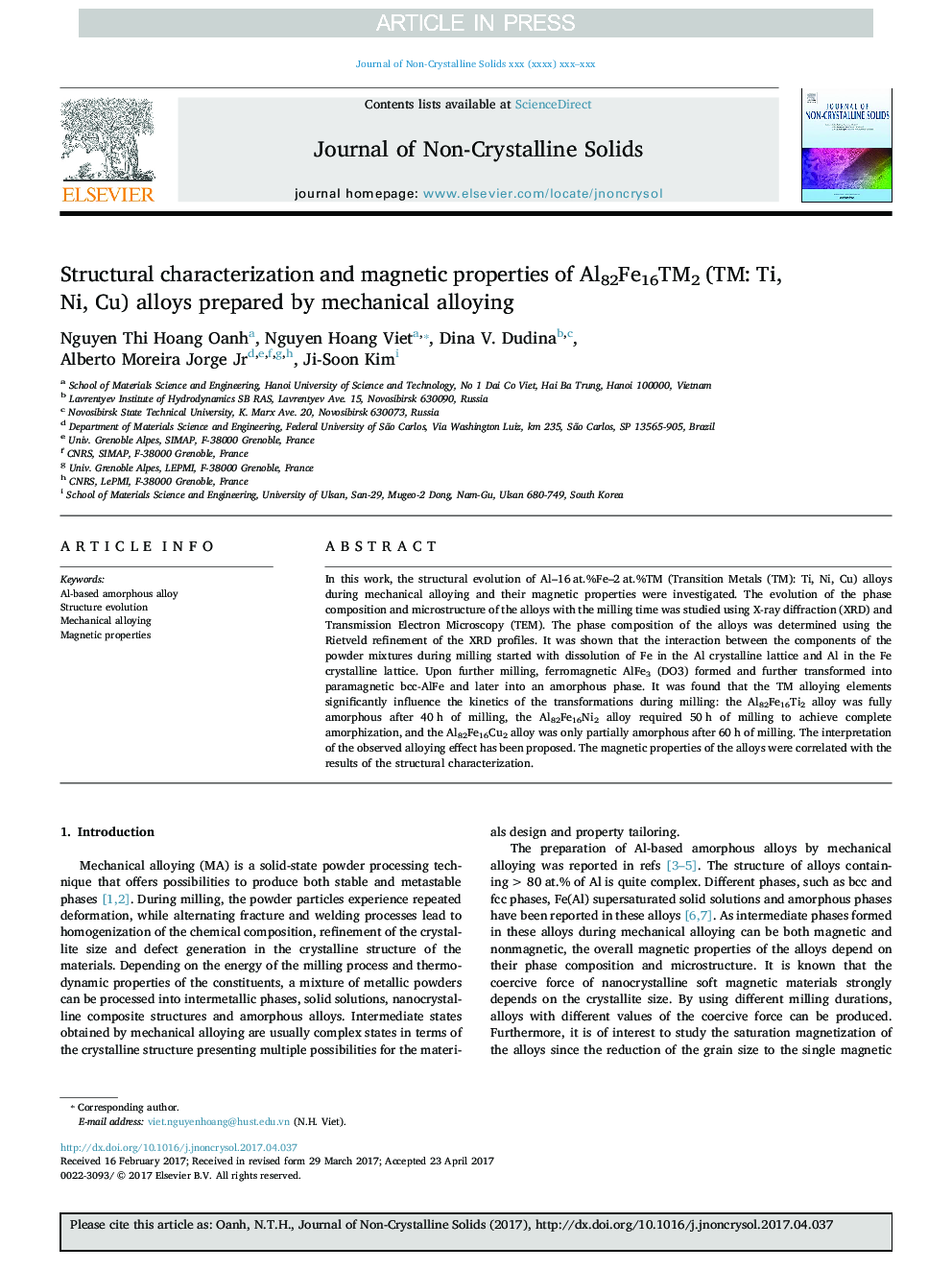| Article ID | Journal | Published Year | Pages | File Type |
|---|---|---|---|---|
| 5441261 | Journal of Non-Crystalline Solids | 2017 | 7 Pages |
Abstract
In this work, the structural evolution of Al-16Â at.%Fe-2Â at.%TM (Transition Metals (TM): Ti, Ni, Cu) alloys during mechanical alloying and their magnetic properties were investigated. The evolution of the phase composition and microstructure of the alloys with the milling time was studied using X-ray diffraction (XRD) and Transmission Electron Microscopy (TEM). The phase composition of the alloys was determined using the Rietveld refinement of the XRD profiles. It was shown that the interaction between the components of the powder mixtures during milling started with dissolution of Fe in the Al crystalline lattice and Al in the Fe crystalline lattice. Upon further milling, ferromagnetic AlFe3 (DO3) formed and further transformed into paramagnetic bcc-AlFe and later into an amorphous phase. It was found that the TM alloying elements significantly influence the kinetics of the transformations during milling: the Al82Fe16Ti2 alloy was fully amorphous after 40Â h of milling, the Al82Fe16Ni2 alloy required 50Â h of milling to achieve complete amorphization, and the Al82Fe16Cu2 alloy was only partially amorphous after 60Â h of milling. The interpretation of the observed alloying effect has been proposed. The magnetic properties of the alloys were correlated with the results of the structural characterization.
Related Topics
Physical Sciences and Engineering
Materials Science
Ceramics and Composites
Authors
Nguyen Thi Hoang Oanh, Nguyen Hoang Viet, Dina V. Dudina, Alberto Moreira Jr, Ji-Soon Kim,
